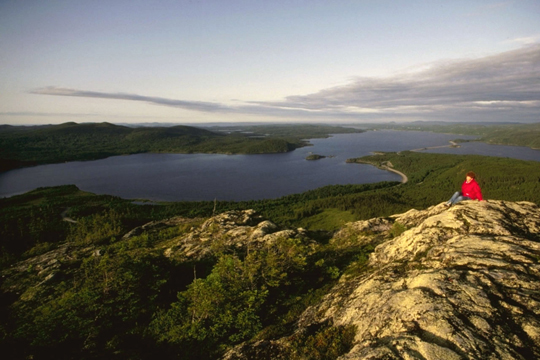Terra Nova National Park is a protected area on the eastern coast of the Canadian island of Newfoundland. It covers 98,800 acres (40,000 hectares) of land near Bonavista Bay. Rocky headlands, rugged cliffs, and sheltered inlets mark Terra Nova’s North Atlantic shoreline. Terra Nova National Park is farther east than any other Canadian national park. The Canadian government established Terra Nova in 1957.

Inland, Terra Nova National Park is hilly and forested with black spruce, balsam fir, white spruce, and white birch trees. The park also has wetlands that support such plants as sheep laurel, Labrador tea, pitcher plants, mosses, and orchids. Mountain ash, pink lady’s-slippers, and wild sarsaparilla are some rare plants that grow in Terra Nova.
The park has a temperate climate, meaning that it is not too hot or too cold. The Gulf Stream and the Labrador Current moderate summer and winter temperatures. During the spring, the Labrador Current pushes icebergs from Greenland and the northern polar ice cap past the coast of the park.
Terra Nova is home to many of Newfoundland’s native mammals, including beavers, black bears, lynxes, martens, otters, red foxes, and short-tailed weasels. Moose, red squirrels, and snowshoe hares are some of the nonnative species that live in the park. Fin, humpback, and minke whales swim off the coast of Terra Nova, along with Atlantic white-beaked dolphins and harbor seals. Bald eagles, ducks, and ospreys are just a few kinds of birds that live in the park.
Warm-weather activities in the park include camping, canoeing, fishing, hiking, kayaking, and scuba diving. During the winter, visitors can go cross-country skiing, ice fishing, and snowshoeing. The Visitor Centre has aquariums, exhibits about the ocean, and a special tank where visitors can touch and learn about Terra Nova’s marine life.
